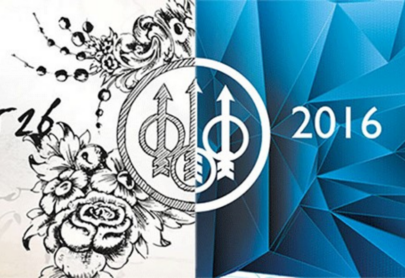
In the Field with Beretta
AT A GLANCE
- Beretta has successfully transformed itself from a local Italian manufacturer of guns into a global company offering a full range of portable arms and related equipment.
- Beretta’s long history of almost 500 years has taught it how to combine tradition and innovation and turn it into its core competitive advantage.
- At the heart of the company’s successful pivot has been its ability to embrace the paradox of seemingly conflicting qualities such as robots vs. craftsmanship, devotion to small town roots vs. global outlook, evolutionary vs. revolutionary growth.
How can a business build its competitive advantage on the seemingly conflicting qualities of tradition and innovation?
Beretta (Fabbrica D’Armi Pietro Beretta SpA) traces its roots back to 1526 when its enterprising founder, Bartolomeo Beretta (1490-1568) delivered 185 gun barrels to the Republic of Venice. Almost 500 years later, Beretta is still thriving as one of the most well-known producers of armaments globally. Its product line ranges from hunting, through sports and practical shooting
Beretta hunting gun with a gravurei
to tactical military shooting guns and related equipment, with brands such as Beretta, Benelli, Franchi, Uberti, Stoeger, Sako, Steiner, Tikka, Burris, BDT and Chapuis Armes.
During its long history, Beretta underwent a major transformation from a sole local producer of guns to a global company active in the market segments of hunting, sports, clothing and accessories, electro-optics, as well as defense and law enforcement. Driven by the founding father’s motto: “Prudence and Audacity,” each of the 15th consecutive generations of the Beretta family has continuously experimented with innovation, while building on their legacy of tradition. As the second-oldest member of the Henokiens, International Association of Bicentenary Family Companies, Beretta serves as an inspiration of the utmost resilience and longevity, stemming from seamlessly encompassing the apparent paradox of innovation and tradition.
THE BROADER ISSUE
The world is changing at a rapid pace; whole industries are emerging and others are disappearing. Yet long-lived family businesses have developed a strong resilience to the shocks by embracing paradoxes that are inherent to their nature.
Family businesses have the unconscious ability to navigate the dichotomies, such as:
- Stability and agility
- Entrepreneurialism and legacy
- Innovation and tradition
- Financial goals vs. socio-emotional wealth
- Heart and hands.
It is because family businesses are engaged in a non-stop balancing act of the goals of the owning family and the business. Some family businesses adopt the “family first,” paradigm, for others it is “business first,” and others try to equally harmonize the two powers. The balancing process emerges naturally from family shareholders who, on a daily basis, face the dichotomy of how one simultaneously functions in the family (with the main values of love, inclusion, dependence and emotions) and in the business (with the main values of success, competition, growth, returns and money).
What may seem to be an oxymoron – innovation via tradition – could be a source of resilience, longevity and a competitive advantage for many family businesses.
EMBRACING PARADOXES AT BERETTA: TRADITION AND INNOVATION
From the beginning, Beretta has developed an unusual profile, full of dichotomies.
Love of Craftsmanship and Cutting-edge Technology
Its core value “quality without compromise” can be traced back to the company’s beginnings. Beretta’s source of quality has always been the craftsmanship skills that have been passed on through the centuries from father – a gun master – to son, as well as the commitment to relay the latest technology. There is concrete evidence from the 18th and 19th centuries when the 10th and 11th generation of Beretta family leaders (Pietro Antonio Beretta and Giuseppe Antonio Beretta) put strong emphasis on the latest technology, expanding the range of production skills and inaugurating a new sales approach first in Italy and then internationally.
Currently, Beretta employs 3,000 people, operates in 17 countries and has a manufacturing capability of 700,000 firearms per year. And it still cultivates a love of craftsmanship. Great care is taken in selecting and treating the wood and metal that forms the core of each gun. Then, long-apprenticed craftsmen shape these elements and add the intricate carvings and engravings that make them unique. These craftsmen work side by side with robots in cutting-edge technology production facilities to produce the highest quality firearms.
Legacy of Gardone Val Trompia and Global Expansion
The Beretta family has always been devoted to the small town of Gardone Val Trompia, where the company has its origins. Surrounded by hilly forests, far away from the distractions of city life, they grew to love the outdoors, wildlife and hunting. The family house, Casa Natale Beretta, and the Beretta Museum are eternal symbols of the family dynasty and the company. The small size of the company and close contact with the local population of the town, which speaks a distinctive local dialect, has always contributed to the intimate, family-like corporate culture.
At the same time, Beretta’s love for gun making and its devotion to continuous innovation, made Gardone Val Trompia “the original Silicon Valley of arms technology.”ii The family always successfully embraced the latest expertise, driven by its philosophy of investing in new technology every year as well as continuing the tradition of craftsmanship by educating new gun masters in the Beretta School of Arms Engraving.
Having strong roots in Gardone Val Trompia, the Berettas also “grew” the wings of explorers. Building on the forefathers’ legacy of geographical expansion, the 14th generation family leader – Ugo Gussalli Beretta – took the company into international waters, establishing a presence in the US in 1980s. Since then Beretta has equipped millions of members of the US armed services with the M-9 semiautomatic pistol. It has established itself as a leader in the hunting and firearms segments, leading to the American market constituting 50% of Beretta’s overall sales.
Evolutionary Growth and Acquisition-based Diversification
Investing in innovation is, according to the family, the best way to ensure the survival of the company. Over the generations, its growth strategy has evolved from progressive, incremental changes to an ambitious acquisition strategy of innovative companies up and across the value chain.
Under the helm of Ugo Gussalli Beretta and the current 15th generation leaders – Pietro Gussalli Beretta and Franco Gussalli Beretta – the firm has acquired over 30 companies, significantly broadening its portfolio.
“Through its prestigious brands, Beretta, Benelli, Franchi, Sako, Tikka, Stoeger, Chapuis, Steiner and Burris, the group has become a reference point for hunting enthusiasts the world over, who are constantly looking for high quality and reliable products, characterized by strong tradition and continuous innovation to fulfill their passion.”iii
Entering the sporting weapons segment, Beretta stretched its brands toward a complete range of weapons with various characteristics and prices varying from $300 to over $100,000. Currently, sporting firearms constitute 75% of sales, 90% of which are generated in foreign markets.
Beretta has further diversified its portfolio by adding complementary products such as a collection of sports clothing and accessories tailored to the world of hunting, shooting and outdoor activities. These premium products enjoy a fitting showcase in a chain of Beretta Gallery boutiques in Milan, London, Paris, New York, Dallas, Buenos Aires, Memphis, Moscow and Abu Dhabi.iv
With a series of acquisitions in the new millennium, including Burris and Steiner,v Beretta entered the field of optics, scopes, binoculars, laser aiming devices and tactical flashlights, as well as the high–end night vision and beacons market.
DID IT WORK?
Beretta successfully transformed itself from a local Italian manufacturer of guns into a global company offering a full range of armaments and related equipment (from hunting, through sports and practical shooting to tactical military shooting), with 50% of its revenues from the US market. The transformation has been possible because the company’s almost 500-year- long history has taught it how to combine tradition and innovation – an apparent oxymoron – and turn it into its core competitive advantage. At the heart of the company’s successful pivot has been its ability to embrace the paradox of seemingly conflicting qualities reflecting tradition and innovation, such as its love for craftsmanship and cutting-edge technology, the legacy of Gardone Val Trompia and global expansion, evolutionary growth and acquisition-based diversification.
In fact, Beretta’s tradition is innovation. By simultaneously looking into the past and into the future, the leaders of every consecutive generation have gracefully embraced the apparent paradox. Their entrepreneurial acting and thinking have been guided by the legacy core value of “quality without compromise,” which has translated into cutting-edge technology and turning Gardone Val Trompia into “the original Silicon Valley of arms technology.” At the same time, the family has long adopted an innovation-based survival strategy, which led first to evolutionary growth and then revolutionary growth in the era of globalization. Beretta seems to be continuously on the outlook for new ideas, new geographies, new market segments, leveraging their current position in their core products.
By embracing tradition and innovation, the company has emerged as a vital, adaptive organization that stays true to its geographical roots and products – a quality that has taken this ancient firm to the zenith of modern gun production. Beretta’s forefathers’ motto “Prudence and Audacity” will serve it well in the future.
TAKEAWAYS
Insights from Beretta’s tactics of embracing an apparent “tradition-innovation” dichotomy include:
- The balancing act of apparent dichotomies could be a source of resilience and competitive advantage. In its almost 500-year history, Beretta has learned how to navigate the dichotomies of seemingly conflicting qualities. It has proved that what may seem to be an oxymoron – innovation via tradition – could be a source of resilience and longevity (Beretta is the second-oldest member of the Henokiens, International Association of Bicentenary Family Companies).
- For many family businesses, a long history of dexterity – the ability to simultaneously handle internal integration and external adaptation – translates into a cutting-edge competitive advantage. Beretta has successfully transformed itself from a local Italian gun manufacturer into a global company offering a full range of armaments and related equipment. By simultaneously cultivating traditional values (love of craftsmanship, roots in Gardone Val Trompia and devotion to quality) and embracing innovation (cutting-edge manufacturing technology, global expansion, acquisition-based diversification), Beretta has emerged as a long-standing, vital and adaptive organization.
This article is based on IMD Case: IMD-3–1495, available from the Case Centre at www.thecasecentre.org, an additional research, as well as input collected from the Beretta family by the Henokiens (www.henokiens.com), International Association of Bicentenary Family Companies.
Research Information & Knowledge Hub for additional information on IMD publications
The case focuses on Contabilizei, a Brazilian startup providing online accounting services for small and medium-sized enterprises (SMEs). The case ...

Family businesses are integral to the entrepreneurial ecosystems in which they operate. In order to explore how the legacy of individual entreprene...
Data cooperatives, entities that allow individuals to pool together their personal data to gain collective bargaining power and enable them to mon...
Fatbergs and grease waste from industrial kitchens are hardly the most enticing topics for a business school case study. Yet ZhanaSolutions, the st...
Craft firms characterized by a humanistic approach to work face a tension between adhering to pure craft principles and embracing industrialization...
This case follows the steps taken by Kaichi Yokoyama, Moon Creative Lab’s CEO, to establish the entity as a pioneering venture studio and entrepren...
How can innovative solutions to address societal grand challenges be cultivated in a pragmatic and impactful way? In this article, we propose the “...

History, values and traditions provide family businesses with a competitive advantage, motivating and guiding their entrepreneurial activity. They ...
Research Information & Knowledge Hub for additional information on IMD publications
Case reference: IMD-7-2546 ©2024
Research Information & Knowledge Hub for additional information on IMD publications
Research Information & Knowledge Hub for additional information on IMD publications
in Südtiroler Wirtschaftszeitung 7 June 2024
Research Information & Knowledge Hub for additional information on IMD publications
Research Information & Knowledge Hub for additional information on IMD publications
Research Information & Knowledge Hub for additional information on IMD publications
in Strategic Entrepreneurship Journal 9 May 2024, ePub before print, https://doi.org/10.1002/sej.1503
Research Information & Knowledge Hub for additional information on IMD publications
Case reference: IMD-7-2544 ©2024
Research Information & Knowledge Hub for additional information on IMD publications
in Journal of Management 5 April 2024, ePub before print, https://doi.org/10.1177/01492063241240713
Research Information & Knowledge Hub for additional information on IMD publications
Research Information & Knowledge Hub for additional information on IMD publications

